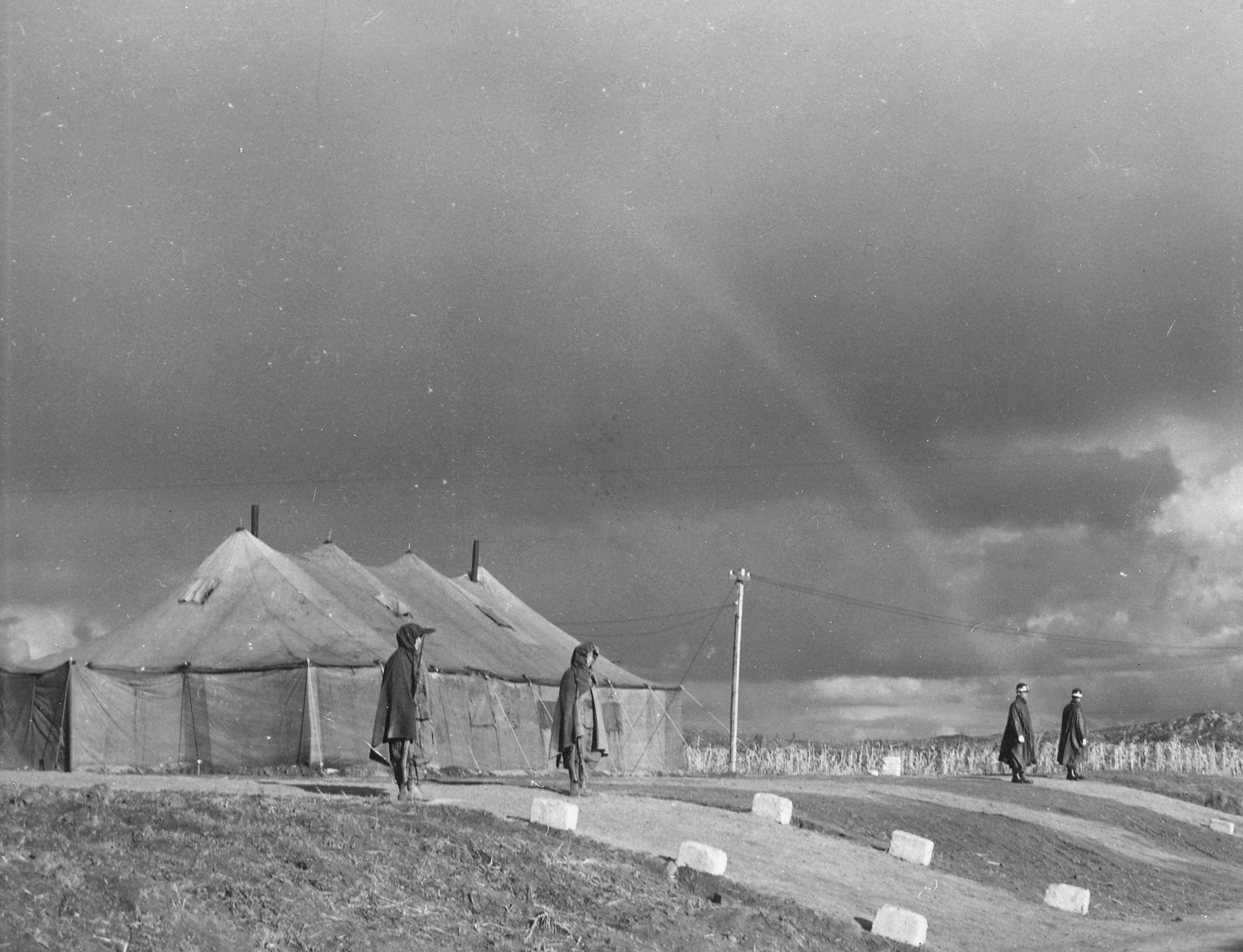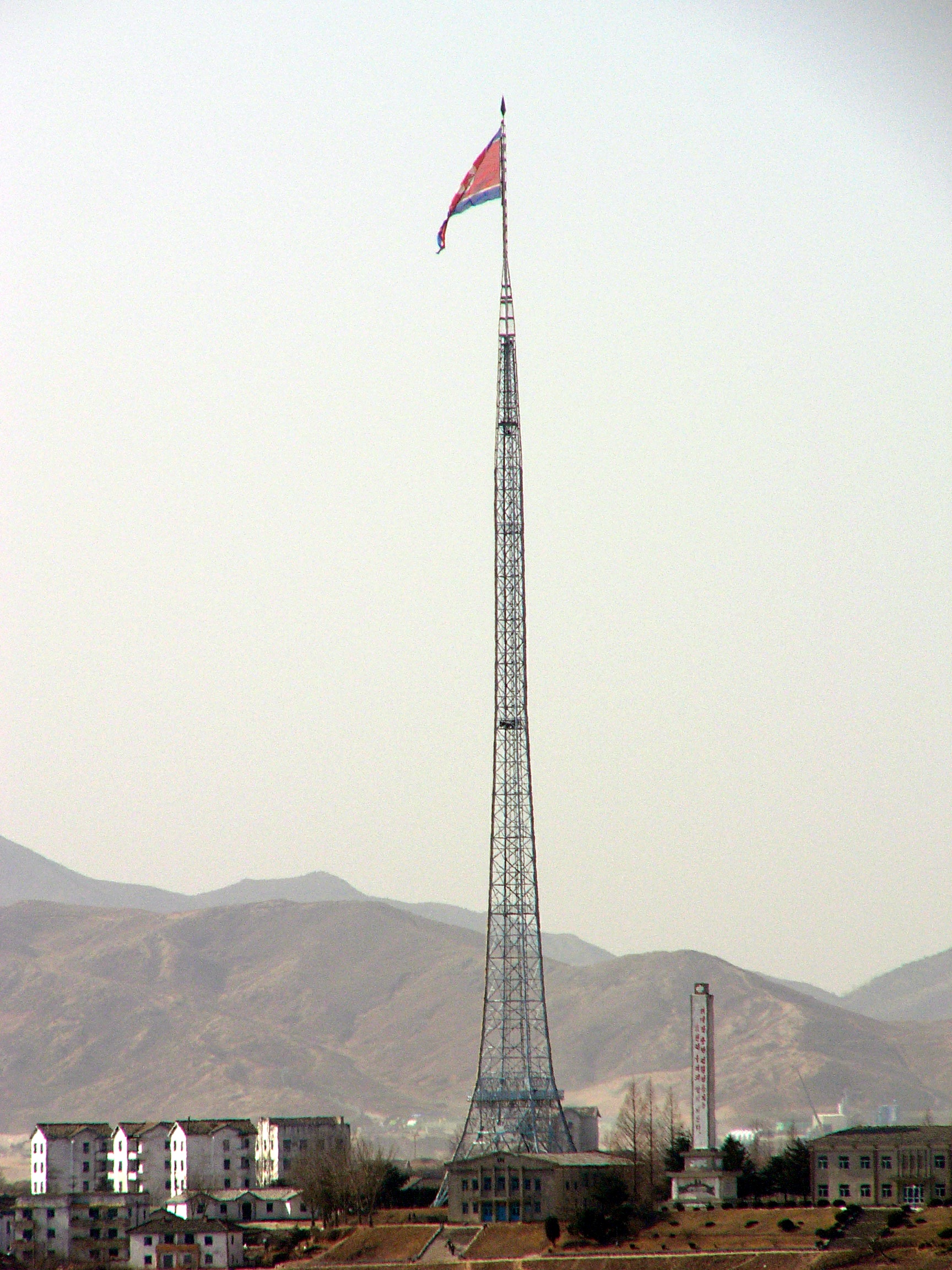|
Panmunjon
Panmunjom, also known as Panmunjeom, now located in Paju, Gyeonggi Province, South Korea or Kaesong, North Hwanghae Province, North Korea, was a village just north of the ''de facto'' border between North and South Korea, where the 1953 Korean Armistice Agreement that ended the Korean War was signed. The building where the armistice was signed still stands. Its name is often used as a metonym for the nearby Joint Security Area (JSA), where discussions between North and South Korea still take place in blue buildings that straddle the Military Demarcation Line. As such, it is considered one of the last vestiges of the Cold War. Location The site of the former village is 53 kilometers north-northwest of the capital of South Korea, Seoul and 10 kilometers east of Kaesong. The village, a small cluster of fewer than ten huts, is on the south side of the Kaesong-Seoul road on the west bank of the Sa'cheon stream. Meetings of the Military Armistice Commission took place in several ... [...More Info...] [...Related Items...] OR: [Wikipedia] [Google] [Baidu] |
Korean Demilitarized Zone
The Korean Demilitarized Zone (Korean: ; Hanbando Bimujang Jidae) is a strip of land running across the Korean Peninsula near the 38th parallel north. The demilitarized zone (DMZ) is a border barrier that divides the peninsula roughly in half. It was established to serve as a buffer zone between the countries of North Korea and South Korea under the provisions of the Korean Armistice Agreement in 1953, an agreement between North Korea, China, and the United Nations Command. The DMZ is long and about wide. There have been various incidents in and around the DMZ, with military and civilian casualties on both sides. Within the DMZ is a meeting point between the two nations, where negotiations take place: the small Joint Security Area (JSA) near the western end of the zone. Location The Korean Demilitarized Zone intersects but does not follow the 38th parallel north, which was the border before the Korean War. It crosses the parallel on an angle, with the west end of ... [...More Info...] [...Related Items...] OR: [Wikipedia] [Google] [Baidu] |
Hangul
The Korean alphabet, known as Hangul, . Hangul may also be written as following South Korea's standard Romanization. ( ) in South Korea and Chosŏn'gŭl in North Korea, is the modern official writing system for the Korean language. The letters for the five basic consonants reflect the shape of the speech organs used to pronounce them, and they are systematically modified to indicate phonetic features; similarly, the vowel letters are systematically modified for related sounds, making Hangul a featural writing system. It has been described as a syllabic alphabet as it combines the features of alphabetic and syllabic writing systems, although it is not necessarily an abugida. Hangul was created in 1443 CE by King Sejong the Great in an attempt to increase literacy by serving as a complement (or alternative) to the logographic Sino-Korean ''Hanja'', which had been used by Koreans as its primary script to write the Korean language since as early as the Gojoseon period (spanni ... [...More Info...] [...Related Items...] OR: [Wikipedia] [Google] [Baidu] |
Seoul
Seoul (; ; ), officially known as the Seoul Special City, is the capital and largest metropolis of South Korea.Before 1972, Seoul was the ''de jure'' capital of the Democratic People's Republic of Korea (North Korea) as stated iArticle 103 of the 1948 constitution. According to the 2020 census, Seoul has a population of 9.9 million people, and forms the heart of the Seoul Capital Area with the surrounding Incheon metropolis and Gyeonggi province. Considered to be a global city and rated as an Alpha – City by Globalization and World Cities Research Network (GaWC), Seoul was the world's fourth largest metropolitan economy in 2014, following Tokyo, New York City and Los Angeles. Seoul was rated Asia's most livable city with the second highest quality of life globally by Arcadis in 2015, with a GDP per capita (PPP) of around $40,000. With major technology hubs centered in Gangnam and Digital Media City, the Seoul Capital Area is home to the headquarters of 15 ''Fo ... [...More Info...] [...Related Items...] OR: [Wikipedia] [Google] [Baidu] |
April 2018 Inter-Korean Summit
The April 2018 Inter-Korean summit took place on 27 April 2018 on the South Korean side of the Joint Security Area, between Moon Jae-in, President of South Korea, and Kim Jong-un, Chairman of the Workers' Party of Korea and Supreme Leader of North Korea. The summit was the third inter-Korean summit - the first in eleven years. It was also the first time since the end of the Korean War in 1953 that a North Korean leader entered the South's territory; President Moon also briefly crossed into the North's territory. The summit took place after the two sides had already held several meetings in preparation for their joint attendance at the 2018 Winter Olympics. The idea was initially brought forward through an official invitation from the North to conduct a meeting. The summit was focused on the North Korean nuclear weapons program and denuclearization of the Korean Peninsula. The Panmunjom Declaration was made following the summit. Agenda The two Koreas' high government officials ... [...More Info...] [...Related Items...] OR: [Wikipedia] [Google] [Baidu] |
Peace House
The inter-Korean Peace House (House of Peace or Home of Peace) is a venue for peace talks between North and South Korea. The building is situated in the Joint Security Area on the south side of the Military Demarcation Line bisecting the area. Before the Korean War, the village, named Panmunjom, consisted of householders. The Peace House is a three-story structure built in December 1989 and is solely designated for non-military purposes. It is a place where peace talks are held except for the military talks between the two Koreas. It was the location of the 2018 inter-Korean summit in April 2018. * Completion date of construction: December 19, 1989 * Floor area: , 3 stories above ground * Location: The Joint Security Area (JSA) of the Korean Demilitarized Zone (DMZ) * Uses: A place for peace talks at the civilian level between North and South Korea * Jurisdiction: United Nations Command * Function: It is a venue for inter-Korean talks. * Layout: The first floor has a pa ... [...More Info...] [...Related Items...] OR: [Wikipedia] [Google] [Baidu] |
Kijŏng-dong
Kijŏng-dong, Kijŏngdong, or Kijŏng tong is a Potemkin village in P'yŏnghwa-ri (), Kaesong, North Korea. It is situated in the North's half of the Korean Demilitarized Zone (DMZ). Also known in North Korea as ''Peace Village'' (),"APK İndirelim" November 12, 2006 it has been widely referred to as 'Propaganda Village' () by those outside North Korea, especially in n and Western media. Kijŏng-dong is one of two villages permitted to remain in the wide DMZ set up under the 1953 armistice during the |
Daeseong-dong
Daeseong-dong (also called Tae Sung Dong, Jayu-ui Maeul and Daeseongdong-gil) is a village in South Korea close to the North Korean border. It lies within the Korean Demilitarized Zone (DMZ). The village is about 1.6 kilometers (1 mile) south of the Bridge of No Return, and 12 km (7.5 miles) from the city of Kaesong, North Korea. , the village has 193 inhabitants. Location Daeseong-dong belongs administratively to Josan-ri, Gunnae-myeon, in Paju. It is the only civilian habitation within the southern portion of the DMZ. Panmunjeom is to the northeast, and the actual Military Demarcation Line (the ''de facto'' border between South and North Korea) is only west of the village. Only individuals who lived in the village before the Korean War, or are descendants of those who did, are allowed to move to the village. Daeseong-dong is only from Kijong-dong, a village in North Korea's portion of the DMZ. Here Korea's division is starkly apparent: rival national flags can be s ... [...More Info...] [...Related Items...] OR: [Wikipedia] [Google] [Baidu] |
North Korea Uncovered
North Korea Uncovered is a comprehensive set of mappings of North Korea. It includes in-depth coverage of thousands of buildings, monuments, missile-storage facilities, mass graves, secret labor camps, palaces, restaurants, tourist sites, and main roads of the country, and even includes the entrance to the country's subterranean nuclear test base, the Yongbyon Nuclear Scientific Research Center. The mapping was the result of a two-year effort by doctoral student Curtis Melvin and other volunteers, who pored over hundreds of news reports, images, accounts, books, and maps in order to identify the geographic and political sites. The result has been called one of the most detailed maps of North Korea available to the public in 2009. It is available as a small KMZ file, viewable with Google Earth. Between April 2007 and April 2012, the data file was downloaded more than 270,000 times. See also * North Korean leader's residences * Sinuiju North Korean Leader's Residence The Sinu ... [...More Info...] [...Related Items...] OR: [Wikipedia] [Google] [Baidu] |
People's Republic Of China
China, officially the People's Republic of China (PRC), is a country in East Asia. It is the world's most populous country, with a population exceeding 1.4 billion, slightly ahead of India. China spans the equivalent of five time zones and borders fourteen countries by land, the most of any country in the world, tied with Russia. Covering an area of approximately , it is the world's third largest country by total land area. The country consists of 22 provinces, five autonomous regions, four municipalities, and two Special Administrative Regions (Hong Kong and Macau). The national capital is Beijing, and the most populous city and financial center is Shanghai. Modern Chinese trace their origins to a cradle of civilization in the fertile basin of the Yellow River in the North China Plain. The semi-legendary Xia dynasty in the 21st century BCE and the well-attested Shang and Zhou dynasties developed a bureaucratic political system to serve hereditary monarchies, or dyna ... [...More Info...] [...Related Items...] OR: [Wikipedia] [Google] [Baidu] |
List Of American And British Defectors In The Korean War
This list names the twenty-two United Nations soldiers and POWs (one British and 21 Americans) who declined repatriation to the United Kingdom and United States after the Korean War in favor of remaining in China, and their subsequent fates. Also listed are soldiers who defected to North Korea. Background Prisoner repatriation was one of the greatest stumbling blocks in the long cease-fire negotiations between the forces of the United Nations and those of China and North Korea. The warring factions finally agreed on an exchange of sick and wounded prisoners, Operation Little Switch, which was carried out in April and May 1953. That June, the two sides agreed that no prisoner who did not wish to be repatriated would be forced to do so (this had long been a sticking point in negotiations, with the Chinese and North Koreans wanting all prisoners returned to their home countries). Prisoners who did not wish to go back to their home countries would be given 90 days in a neutral compou ... [...More Info...] [...Related Items...] OR: [Wikipedia] [Google] [Baidu] |




